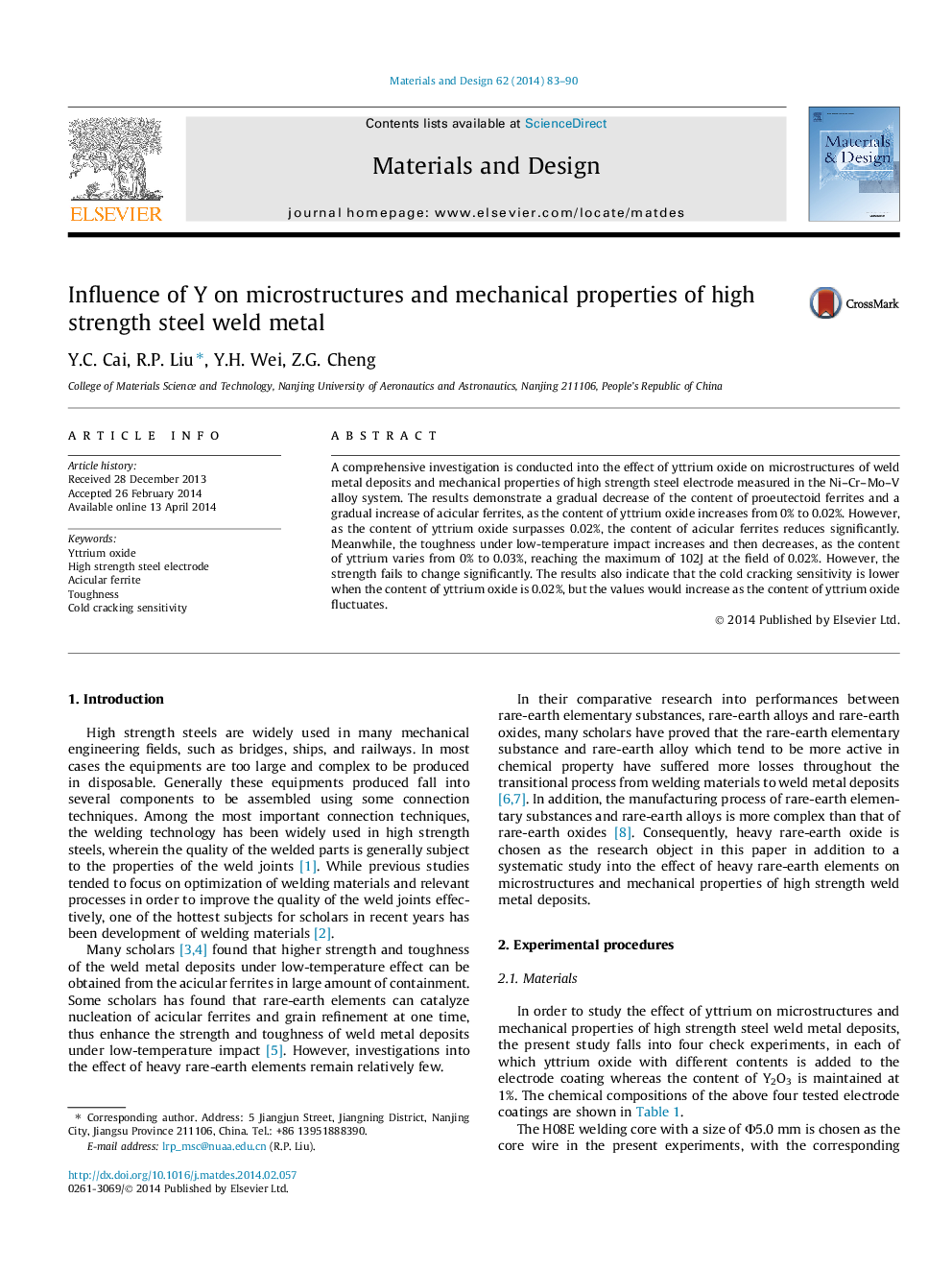| Article ID | Journal | Published Year | Pages | File Type |
|---|---|---|---|---|
| 829081 | Materials & Design (1980-2015) | 2014 | 8 Pages |
•The loss of yttrium oxide very low when it transited from welding materials to weld metal deposits.•The yttrium element could refine and spheroidize inclusions, and the nucleation of acicular ferrites would be promoted.•Proper yttrium oxide could reduce the content of diffusible hydrogen in weld metal deposits.•Mechanical properties such as tensile strength and low-temperature toughness were acceptable.
A comprehensive investigation is conducted into the effect of yttrium oxide on microstructures of weld metal deposits and mechanical properties of high strength steel electrode measured in the Ni–Cr–Mo–V alloy system. The results demonstrate a gradual decrease of the content of proeutectoid ferrites and a gradual increase of acicular ferrites, as the content of yttrium oxide increases from 0% to 0.02%. However, as the content of yttrium oxide surpasses 0.02%, the content of acicular ferrites reduces significantly. Meanwhile, the toughness under low-temperature impact increases and then decreases, as the content of yttrium varies from 0% to 0.03%, reaching the maximum of 102J at the field of 0.02%. However, the strength fails to change significantly. The results also indicate that the cold cracking sensitivity is lower when the content of yttrium oxide is 0.02%, but the values would increase as the content of yttrium oxide fluctuates.
